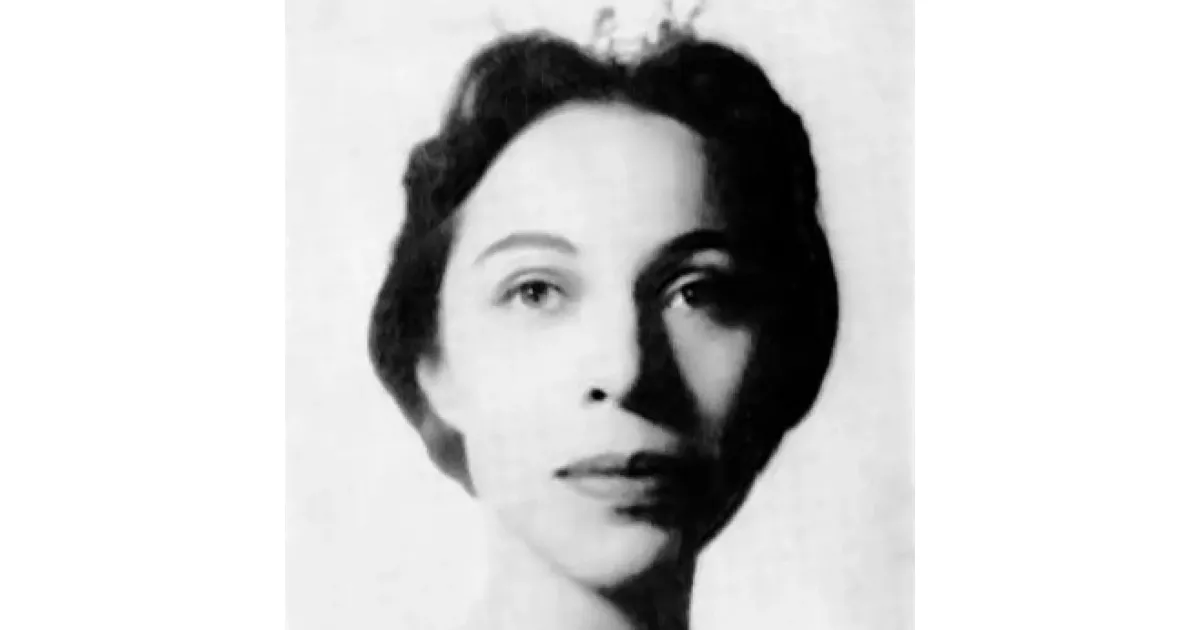From career breakthroughs to professional milestones, explore how Maria Tallchief made an impact.
Maria Tallchief (Elizabeth Marie Tall Chief) was an Osage and American ballerina, recognized as America's first major prima ballerina and the first Native American to achieve that rank. Her collaboration with choreographer George Balanchine is credited with revolutionizing American ballet. Tallchief's talent and groundbreaking achievements paved the way for future generations of American dancers and brought prominence to ballet in the United States.
1933: Move to Los Angeles and Training with Ernest Belcher
In 1933, Maria Tallchief's family relocated to Los Angeles, aiming for opportunities in Hollywood musicals. Tallchief began studying with Ernest Belcher, marking a significant step in her ballet education.
1942: Graduation and Move to New York City
In 1942, Maria Tallchief graduated from Beverly Hills High School and, with the encouragement of Tatiana Riabouchinska, moved to New York City to pursue her ballet career. She also had a bit part in the MGM musical "Presenting Lily Mars" that year.
1942: Krassovska's near departure
Late in 1942, Krassovska nearly quit the company, potentially leading to a sudden promotion for Tallchief. Though Krassovska returned, the incident highlighted the need for Tallchief to prepare for technically difficult roles quickly.
1943: Krassovska Leaves and Tallchief Receives Positive Reviews
In the spring of 1943, Krassovska left the company after an argument with Denham, which thrust Tallchief into a prominent role. She received positive reviews, including praise from The New York Times critic John Martin for her performance in Nijinkska's Chopin Concerto.
1944: Collaboration with George Balanchine and Promotion
In 1944, George Balanchine began working with Ballet Russe de Monte Carlo on "Song of Norway," marking a significant turning point in his and Tallchief's careers. Balanchine gave Tallchief a solo and made her Danilova's understudy. Following the ballet's success, Tallchief's salary was increased to $50 per week, and she was promoted to "soloist."
1945: Balanchine's Tutelage and Transformation
In 1945, while on tour, George Balanchine began to intensely tutor Maria Tallchief, focusing on her basic ballet technique. He helped her transform her weaknesses, particularly her turnout, into strengths, enhancing her overall performance and artistry.
1946: Balanchine Establishes the Ballet Society
In 1946, George Balanchine partnered with Lincoln Kirstein to establish the Ballet Society, a precursor to the New York City Ballet, setting the stage for new opportunities for dancers like Maria Tallchief.
1947: Joins Balanchine at Paris Opera Ballet
In 1947, after her contract with Ballet Russe de Monte Carlo expired, Maria Tallchief joined George Balanchine in France, where he was a guest choreographer at the Paris Opera Ballet. This move was marked by challenges and controversies, particularly due to opposition from supporters of Serge Lifar.
October 1948: Debut with the New York City Ballet
In October 1948, Maria Tallchief became one of the first stars and the first prima ballerina of the New York City Ballet, marking a significant moment in her career and in the history of American ballet.
1949: Stars in The Firebird
In 1949, Maria Tallchief danced the lead role in "The Firebird," choreographed by George Balanchine. The debut was a sensation, launching her to the top of the ballet world and earning her the title of prima ballerina.
1952: Portrays Anna Pavlova in Million Dollar Mermaid
In 1952, Maria Tallchief portrayed Anna Pavlova in the movie musical "Million Dollar Mermaid", marking one of her appearances on screen.
1954: Performance in The Nutcracker
In 1954, Maria Tallchief performed the role of the Sugar Plum Fairy in George Balanchine's reworked version of "The Nutcracker." Her performance significantly contributed to the ballet becoming an annual Christmas classic and a major box-office success.
1954: Returns to the Ballet Russe de Monte Carlo
In 1954, Maria Tallchief worked for the Ballet Russe de Monte Carlo, earning $2,000 a week, reportedly the highest salary ever paid to a dancer at the time. This marked a significant moment in her career and recognition of her value in the dance world.
1958: Created Lead in Gounod Symphony
In 1958, Maria Tallchief created the lead role in George Balanchine's "Gounod Symphony" before taking a leave of absence to have her first child. This performance was a notable achievement in her career.
February 1960: Leaves New York City Ballet
In February 1960, Maria Tallchief left the New York City Ballet. During her tenure, she also made guest appearances with other companies.
1960: Joins American Ballet Theatre and Performs in Russia
In 1960, Maria Tallchief joined the American Ballet Theatre, later becoming a prima ballerina. That summer, she performed with Erik Bruhn in Russia, becoming the first American dancer to perform at Moscow's Bolshoi Theater. She was recognized for her "aplomb, brilliance, and dignity of the American style."
1962: Expanded Repertoire at American Ballet Theatre
From 1960 to 1962, Maria Tallchief expanded her repertoire at the American Ballet Theatre, taking on more dramatic roles, including the title roles in Birgit Cullberg's "Miss Julie" and "Lady from the Sea," as well as the heroine in Antony Tudor's "Jardin aux Lilas."
1962: Partnership with Rudolf Nureyev
In 1962, Maria Tallchief was Rudolf Nureyev's partner for his American debut, which was broadcast on national television. This partnership was a significant event in both of their careers.
1966: Retirement from Dancing
In 1966, Maria Tallchief retired from dancing after relocating to Germany and briefly becoming the lead dancer of the Hamburg Ballet. One of her last performances was in the title role of Peter van Dyk's "Cinderella".
1966: Final Performance in America
In 1966, Maria Tallchief's final performance in America was on television's "Bell Telephone Hour", marking the end of her stage career in the United States.
1974: Founded Lyric Opera's ballet school
In 1974, Maria Tallchief founded the Lyric Opera's ballet school, where she taught the Balanchine technique, emphasizing the importance of respecting both the art of ballet and the artist.
1981: Founded the Chicago City Ballet
In 1981, Maria Tallchief, along with her sister Marjorie, founded the Chicago City Ballet, where she served as co-artistic director.
1987: Demise of the Chicago City Ballet
In 1987, the Chicago City Ballet, co-founded by Maria Tallchief, ceased to exist, though she was credited with increasing the popularity of dance in Chicago.
1989: Featured in "Dancing for Mr. B"
In 1989, Maria Tallchief was featured in the documentary film "Dancing for Mr. B".
1990: Artistic Advisor to Von Heidecke's Chicago Festival Ballet
From 1990 until her death, Maria Tallchief was the artistic advisor to Von Heidecke's Chicago Festival Ballet.
Mentioned in this timeline

Google LLC is a multinational technology company specializing in online...
Germany officially the Federal Republic of Germany is a Western...

Los Angeles is the most populous city in California and...

The Metropolitan Museum of Art or the Met is a...

Chicago is the most populous city in Illinois and the...

Cinderella known also as The Little Glass Slipper is a...
Trending

1 month ago Trump Threatens US Military Action in Nigeria; Nigeria Rejects the Intervention

7 months ago Alex Warren to electrify the 2025 American Music Awards with a stellar performance.
6 months ago Trevor Zegras Trade: Ducks Consider Move, Trade Talks Heating Up, Potential Teams

18 days ago Childcare's economic boost in Prescott Valley, Yavapai crisis, and Hochul's universal options.
T-Mobile Arena located in Paradise Nevada opened in April as a joint venture between MGM Resorts International and AEG Situated...

30 days ago Jake Paul to Fight Anthony Joshua on December 19: A Sensational Boxing Match
Popular

Candace Owens is an American conservative political commentator and author...

Ilhan Omar is an American politician currently serving as the...

XXXTentacion born Jahseh Dwayne Ricardo Onfroy was a controversial yet...

Michael Joseph Jackson the King of Pop was a highly...

Bill Gates an American businessman and philanthropist revolutionized personal computing...

Frederick Christ Trump Sr - was an American real estate...
